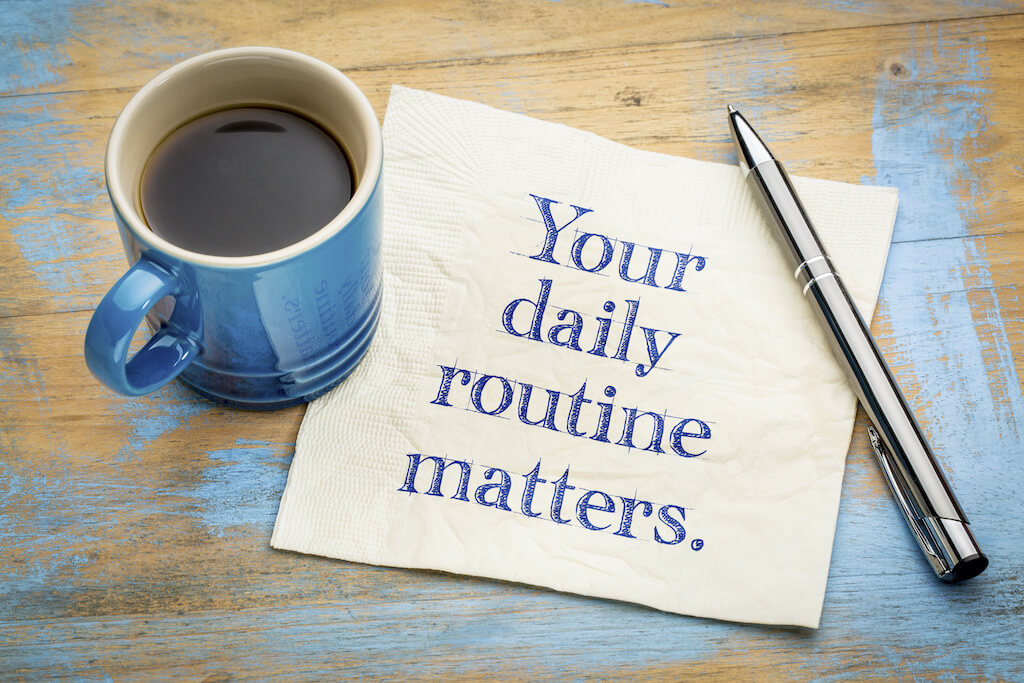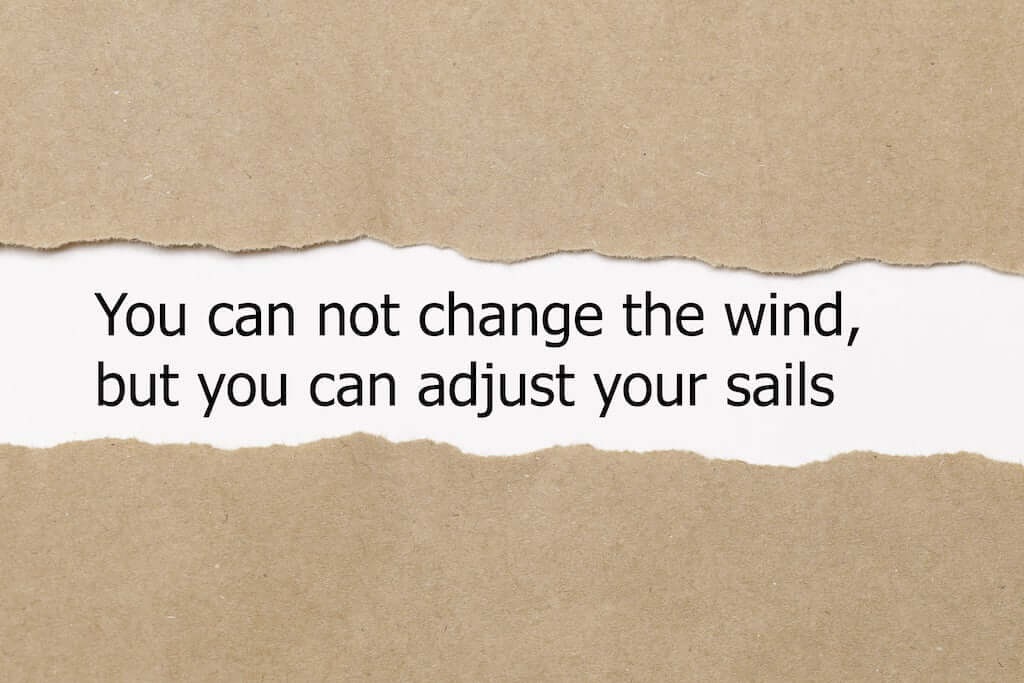Sustainable Caregiving Strategies
Strategy: Embrace the Routine
A routine is a sequence of actions regularly followed; a fixed program. As our caregiving experience intensifies, developing, and adhering to routines becomes increasingly more important. When we organize tasks and responsibilities into systems and routines, we free up time and headspace. We feel more in control and, therefore, less stressed. When we are strategic and intentional in how we use our time, we can purposefully work time for ourselves into the routines and into our days.

“Just keep in mind: the more we value things outside our control, the less control we have.”
Epictetus
Resistance:
We might resist a routine for many reasons. A routine might signify that we are locked in; locked into the caregiver role and locked into the responsibilities. It might signify the loss of spontaneity, the loss of control over how we spend our time, the loss of freedom. It may be that we have a routine and resist changing it as circumstances change. We might actively resist a reorganization or we may not realize that our outdated routines are hurting rather than helping us manage newly competing priorities.
Benefits:
The benefits of using routines include that we:
- are better able to prioritize
- act rather than react
- have more time
Routines allow us to maintain a sense of control and calm. Once we embrace the power of the routine and experience these benefits, we can get creative and begin to apply this strategy to other parts of our life. Experimenting will help find the routines that fit and produce the best results. Routines can be comforting to our care recipient and can minimize resistance as more hands-on care is required. The consistency of morning and evening routines surrounding meals, meds and toileting can help keep drama at bay.
Examples:
Nutrition
It can be challenging to stay properly nourished and hydrated as a caregiver. As we bounce from doctor’s appointment to doctor’s appointment and one task to the next, we may miss meals and then, in a fit of desperation, eat whatever is most convenient.
You might place parameters around what and when you eat, reducing the stress that results from trying to manage your own meal in the midst of taking care of other needs. You could list your favorite quick and healthy options, and keep them well-stocked and well placed so that hunger no longer creates a distraction. Creating a routine around nutrition including what, when and how we eat helps us regain power over our mood. If we eat on a regular schedule, hungry or not, we are better prepared to handle the unexpected events that happen throughout the day.
Running multiple households
A lot goes into running the household for your family member. These tasks can fairly easily fit into the day during the early stages, but as more and more of our time is devoted to caregiving, the combination of small tasks can quickly become overwhelming.
Listing the tasks may help you begin to see how they might be coordinated, scheduled, combined, or automated. Creating routines that include as many tasks as possible will illuminate the blocks of time that are available for you. This time can be strategically used for self-care.
Reinforcement:
Caregiving involves adjusting to the unexpected. During these moments of crises, it is easy to toss the routine out the window and slide back into old habits of juggling the balls as they get tossed to us. During these hectic times, it would serve us to modify rather than discard the routine. When we modify the routine and keep the core components in place, we are able to get through the more turbulent times in a way that feels more in control. A modification may involve temporarily delegating parts of the routine. It may be that the timing is shifted or broken up into smaller pieces and reorganizing them. You might look at the week ahead and identify routine disrupters such as a doctor’s appointment, so that you may plan accordingly.
Seamless Practice

Reflect:
- Does a certain time of day feel more stressful?
- What activities or tasks keep you off balance during the day?
- When do you find that you are reacting rather than acting?
- What might you incorporate into a self-care routine?
Journal:
- List specific tasks that might be incorporated into a routine. What organization opportunities appear?
- How might you use the time that becomes available when the routines begin to produce benefits?
- As you begin to practice using more routines, record the benefits, the challenges, and the changes that are needed.


Apply:
- Create and use one new routine and try it for a week.
- Experiment with helpful tools such as an app, a written checklist, a timer.
- After a week, assess how it is working. What modifications are needed?
- Routinely assess your routines and adapt them as needs change.
